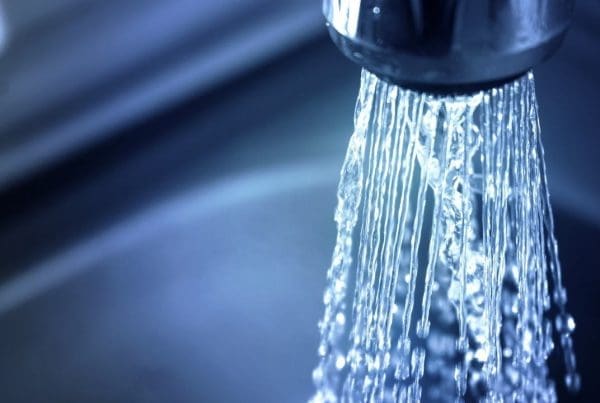If you have a reverse osmosis system in your home, you know it’s an important part of your water filtration system. If it doesn’t work properly, you risk drinking contaminated water, and your plumbing may also be affected. The good news is that regular cleaning and maintenance can keep your system running smoothly for years to come.
What is Reverse Osmosis?

Reverse Osmosis is a filtration system designed to remove dissolved solids, organic and inorganic forms, that a water softener cannot. RO removes metals like arsenic, aluminum, copper, lead, chromium, and many others. It also removes inorganic forms such as nitrates, phosphates, chlorides, sulfates, and more. RO works by forcing water from your home’s supply through the RO membrane. This membrane contains thousands of tiny holes, just large enough to allow water molecules to pass through. Anything bigger than a water molecule is trapped and cannot fit through the membrane. C and J Water offers a premium 4-stage reverse osmosis system that is a great solution for water used for drinking and cooking.
What are the components of reverse osmosis?
RO’s job is to filter out contaminants like bacteria, minerals, and sediment from your water source. The first filter in the system protects the membrane from larger particles that could clog it up or damage it. Then there’s another filter that removes more harmful chemicals, such as chlorine and heavy metals (like lead). In most cases, you’ll need to replace these filters once per year, depending on how much water you use in your household if you have hard water or live in an area with high fluoride levels. In that case, this may be more often—and if your city’s tap water has a high pH level (more than 8), replacing these filters even more frequently might be necessary to prevent corrosion in the lines leading back up into your house.
Sediment Filter—The sediment filter screens out particulate material, such as dirt, sand, or rust, which may clog the other filters in the system. Various micron-size filters are available.
Activated Carbon Block Prefilter—The activated carbon prefilter reduces chlorine, which may damage the RO membrane filter. It also reduces elements that cause water to taste and smell unpleasant, including chlorine taste and odor.
RO Membrane—the reverse osmosis membrane provides up to 99% Total Dissolved Solids (TDS) rejection. The membrane is what separates the water from the non-water.
Activated Carbon Block Polishing Filter—The polishing filter absorbs any residual tastes & odors just before the water is delivered to a holding tank and then through the faucet.
Reservoir Tank—A durable, high-quality, powder-coated, steel tank ensures you’ll have a plentiful supply of refreshing water. The automatic shutoff valve shuts off the system when the reservoir tank is full. Various size tanks are available.
RO Faucet—This faucet mounts directly to your sink or countertop, providing a dedicated tap for RO-filtered water. Multiple styles and colors are available.
Replace the prefilters at least once a year to remove any contaminants that may have accumulated.
By replacing your prefilters at least once a year, you can ensure that your RO system stays at peak performance. Your prefilters are the first line of defense against contaminants, so it’s important to keep an eye on them and replace them when needed.
How do I know if my prefilter or RO membrane needs to be replaced?
If the flow rate through your RO system slows down noticeably, it might be time for new prefilters. If you’re using the c and j reverse osmosis system with a separate pre-filter and membrane, check to see if there is any discoloration or debris in your water after using it for several weeks or months. If there is any buildup on the faucet spout or shower head then this means that contaminants have been filtering through both stages and collecting within the tank itself.
Replace the membrane at least every five years to keep your reverse osmosis system functioning at its best.
The membrane is the heart of your system and is responsible for removing impurities from your water. Unfortunately, it can’t last forever. You should aim to replace it every five years (or sooner if you live in an area with very hard water). When the membrane becomes damaged or worn out, it won’t be able to perform its job properly—and that means more toxins will get through into your drinking water.
Keep contaminants away from your reverse osmosis faucet
One of the most important things you can do to keep your R.O. system running smoothly is to keep contaminants away from the tap.
Keep it clean! The faucet should not be touched as it will spread germs that could contaminate your water supply.
Don’t let it drip! When you are done using your reverse osmosis system, be sure to turn off the faucet. Don’t just leave your RO system dripping until next time—that could cause mold or bacteria to grow inside it.
Don’t insert the faucet into bottles or other containers when you fill them. This can introduce bacteria and other contaminants into the RO system.
With regular cleaning, you can keep your system running smoothly.
A few simple steps can ensure that your reverse osmosis system will continue to do its job well. To clean your reverse osmosis system, you’ll need to disconnect it from the water line and fill up a bucket with warm water. Using a soft brush, scrub all of the parts of the unit gently while they are submerged in water. After you’ve cleaned all of these parts, drain out all of this water and rinse with clear water until no soap is left on any portion of your unit. After rinsing it out thoroughly, reconnect it to your faucet or other sources of drinking water so that you can test whether or not everything is working properly again by turning on one tap at first—using only cold for now—and then waiting for about 15 seconds before turning it off again; if there are no leaks from anywhere on either side (top lid removed), then congratulations—you’re done cleaning for now. It’s best practice not to clean your system too frequently as doing so will wear down its components faster than necessary..
Does C and J Water offer RO filter changes?
We can change your filters for you, but you can also order and change your filters on your own. If you don’t clean your RO system regularly and thoroughly, it will not work properly and may need to be replaced sooner than normal.
We hope you found this article helpful in learning how to care for your reverse osmosis system. If you have any questions or want to get started on a new system, please contact us at 317-733-SOFT or visit our website at candjwater.com.





